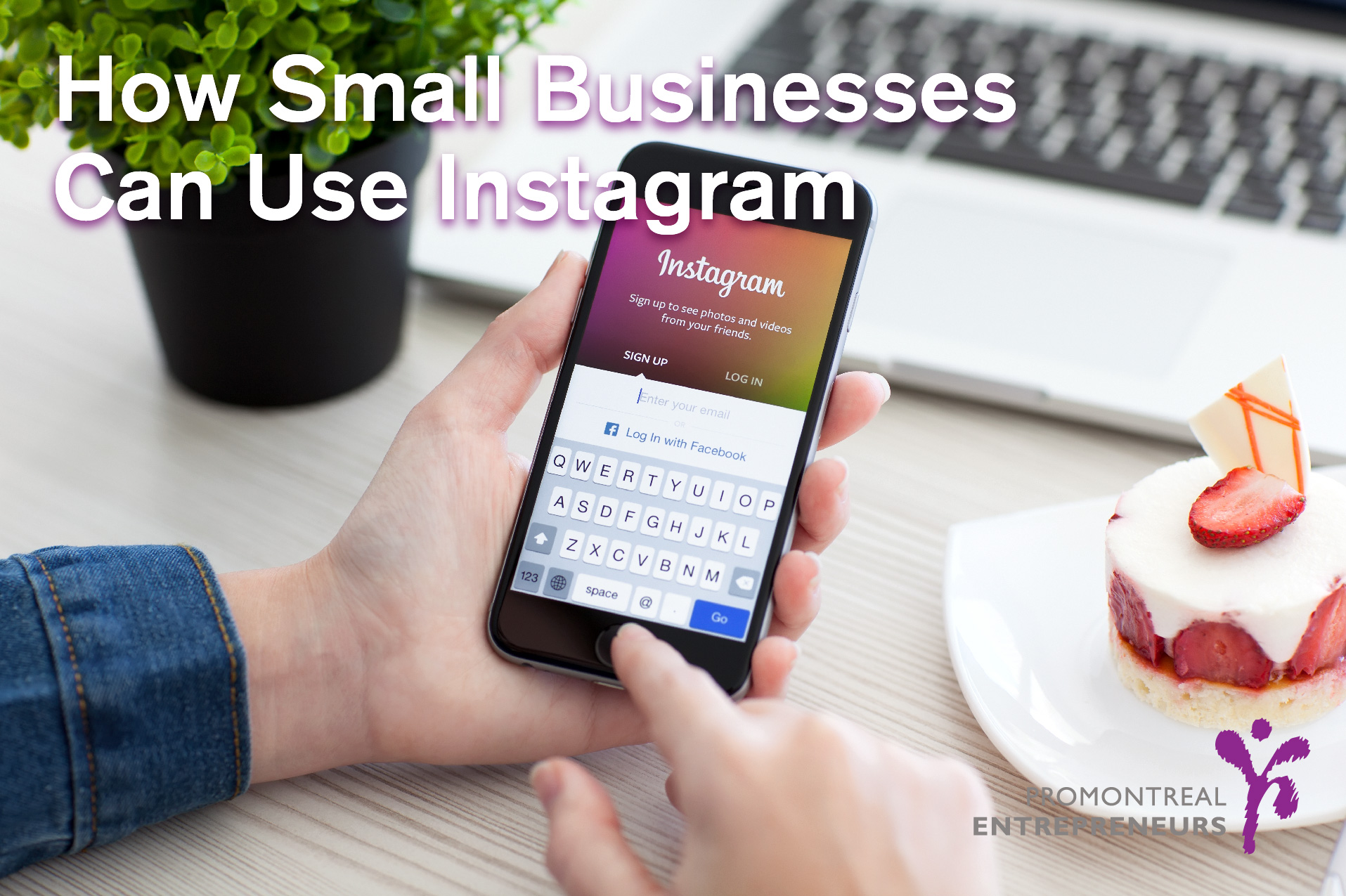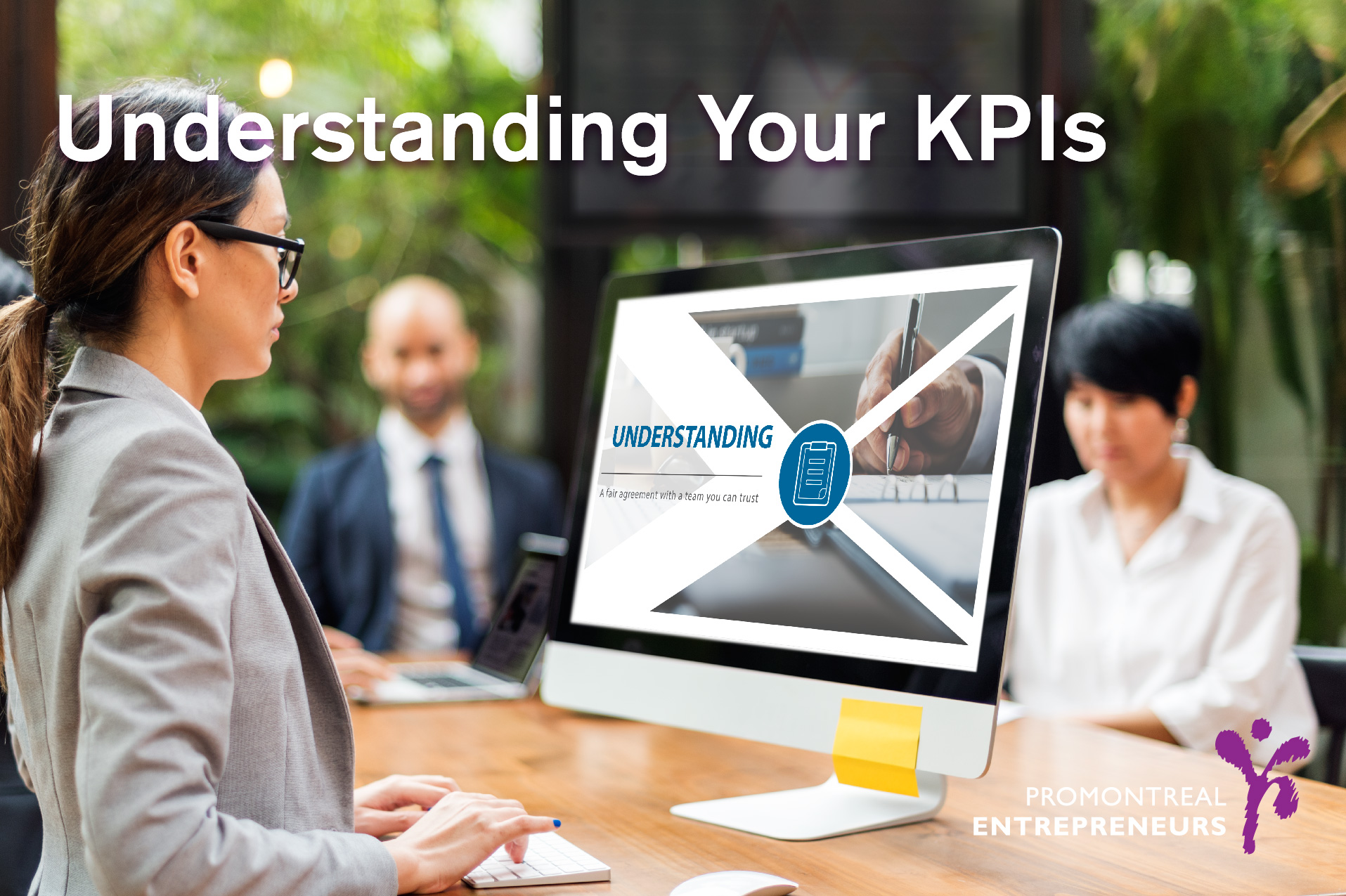Taglit’s Startup Innovation Center
In its short history, Israel has managed to become one of the world’s few startup capitals. It has become the startup nation with the third most companies listed on NASDAQ. Given Israel’s population of 9 million, various internal and external conflicts, and lack of natural resources, it has accomplished what most would consider to be impossible. Tel Aviv has built a reputation that reflects more than its beautiful beaches. Just go visit Taglit’s Innovation Center to see exactly what we are talking about.
The Innovation Center at the heart of Tel Aviv aims to display new advancements of Israeli Start-Ups in different fields. In collaboration with the Tel Aviv Stock Exchange, Taglit-Birthright built the “State of Mind” Innovation Center. It provides an opportunity to talk about the fact that this sliver of land has over 4,000 operating startups. Visitors can learn about Israel as an international leader in technology, engineering, and philanthropy. More specifically, ground-breaking inventions for agriculture, medicine, transportation, security, and outer space are displayed. What is unique about the Innovation Center is that it emboldens user interaction. The center puts up touch screens, tutorials and prototypes, allowing for visitors to explore and understand various innovations. This way people can understand exactly why the country is deserving of its “Startup Nation” title.
Each Taglit-Birthright group that visits the Innovation Center begins by exploring the interactive exhibition, and continues with a meet-up with a Ieading Israeli entrepreneur. Here are the names of just a few start-ups displayed at the Innovation Center that is destined to make revolutionary impact.
-
Electroad: This technology uses energy from the road to power electric vehicles using that road. Copper chains are inserted into grooves in the asphalt, then connected to a power converter on the side of the road that links to the city’s electric grid. This will revolutionize transport.
-
Pillcam: A tiny camera in a capsule. After the patient swallows the capsule, the camera can reveal any abnormalities and supplies essential medical diagnosis. A tiny wireless camera contained in an easy-to-swallow and disposable capsule about the size of a vitamin pill transmits images as it travels through the human body. This inventions makes excruciating exams, such as colonoscopies, much more endurable.
-
Skyfi: It is the world’s most advanced nanosatellite with larger cover area and bandwidth. This allows for better connection between more people, allowing us to become part of a global village. Basically, this is a much cheaper way of spreading internet globally.
Each startup begins with a need. Taglit Birthright had an unmet need to show groups the innovation side of Israel; and thus the center was born. The center was originally intended for Taglit participants, but curiosity and interest arose quickly. Now the center also hosts governmental and business delegations from all over the world, a variety of private and group tourist organizations, and all kinds of people who want a glimpse into the Israeli innovation scene.
Former Prime Minister Golda Meir famously said the God had made a mistake in sending the Jews to the only country in the Middle East with no oil. While it is true that oil may have made things easier, lack thereof has, without a doubt, forced Israel to find new and innovative ways to survive and transcend all expectations.
Top 5 Legal Advice for Startups
 Starting your own business is an overwhelming process. In addition to all tasks you must accomplish in building your product or service, there are certain legal concepts you must understand. This will help you make the best decisions for your start-up. What may seem minor at the moment can have a large impact on your business in the future. Here is our list of the most important legal concepts entrepreneurs need to understand.
Starting your own business is an overwhelming process. In addition to all tasks you must accomplish in building your product or service, there are certain legal concepts you must understand. This will help you make the best decisions for your start-up. What may seem minor at the moment can have a large impact on your business in the future. Here is our list of the most important legal concepts entrepreneurs need to understand.
1. Why incorporation is necessary:
Incorporating your business has countless advantages. For one, it limits your personal liabilities. Limited liability means that a shareholder is not liable for the debts incurred by the company. To add, when your company is incorporated, shareholders usually only have rights against the corporation itself and not its owner. Of course, unless fraud is committed. Incorporating comes with advantages tax-wise as well. This includes lower income tax rates. It is also important for you to understand the difference between federal and provincial incorporation. One is not necessarily better than the other. It all depends on the nature of your business and the vision you have for it. The main difference between both is that federal incorporation will allow for you to do business across the country under a same business name, even if some other company is already using a similar name in a given province or territory. However, you are only able to operate from a given jurisdiction if you have incorporated provincially. So incorporating in Quebec, for instance, doesn’t mean you can’t do business nationally. It just means that you are required to operate your business from Quebec.
2. Why a shareholders agreement is needed:
While everything can go as planned at the early stages of business development, this may not always be the case. You and your business partner may disagree on issues like how to grow your business, what to do when unable to make a unanimous decision, or what would happen in a time of death or injury. A shareholders agreement is way to minimize potential business disputes between owners by clarifying how decisions are to be made. It also sets the stage for the procedure during a dispute resolution. Because it portrays a sense of stability, having a shareholders agreement also assists with funding from investors and potential business partners.
3. Why trademarks are important:
Protecting your business name and logo is crucial. If you don’t protect your name and logo at the very least, any business founded after yours has the right to use it and, more importantly, trademark it as their own. Having your name and logo trademarked will allow for legal recourse against those trying to use a same or similar logo or name. Your trademark will also appear when other entrepreneurs conduct a trademark search. The Canadian trademark registration process is fairly straightforward. All information can be found on the Government of Canada website. Remember that in order to trademark a logo or name, you must use it. Use it or lose it!
4. Avoiding legal problems with my employees
Navigating through the basics of employment law is necessary to avoid costly lawsuits. This should come with the understanding that company founders, like all others working in the company, should be classified as either contractors, or employees, and be compensated as such. For instance, founders can be paid with options, shares and restricted stock units only if they are classified as contractors. Otherwise, all people classified as employees must be paid minimum wage at the very least. In many cases, start-ups often look to hire unpaid interns. Though this may seem like a financially sound decision, hiring unpaid interns comes with its own set of guidelines and details. Unpaid internships are not permitted in Quebec, unless they fall under the three narrow circumstances listed in Quebec’s ALS (An Act Respecting Labor Standards). Because unpaid internships are becoming more popular you must ensure that you are complying with the regulations of the ALS. With labor laws constantly changing you must also remain informed on employment contracts, workplace injuries, and regulation on overtime.
5. Understand equity financing:
If you’re going down the route of equity financing you must understand the difference between equity and preference shares. Equity shares are ordinary company shares. Meaning that the amount of shares held by an owner is the portion of their ownership in the company. On the other hand, preference shares get priority over equity shares. This means that preference share owners get precedence on matters like distribution of dividend, and repayment of capital during liquidation. There are however, different types of preference shares depending on the amount of power you are willing to give away. This includes, participating preference shares, non-participating preference shares, convertible shares, non-convertible shares, cumulative shares and non-cumulative shares. Since equity financing involves trading partial ownership for capital, your control may be more diluted as a result. The real question is how much influence you’re willing to give up and legal repercussions involved.
You may be wondering whether spending money on a lawyer so early in the game is necessary. You may also contemplate taking on the legal work on your own. What you should keep in mind is that there are certain aspects of running a business that should not be compromised. You should not be looking to save money when it comes to legal activity. It is may be costly now, but suffering the consequences of lack of legal expertise will cost you a lot more later on.
Instagram for Small Businesses
 We all know the power of Instagram. It’s filled with big corporations competing for the attention of millions of Millennials, and members of Generation Z. Small businesses will be intimidated by big corporations with unlimited marketing budget, large following and quality content. But this is the beauty of social media. Though all of these things can seem like deterrents at first, they are also the reason why you must give Instagram a try. But how can you use Instagram for small business? Instagram can be a great way to promote your brand, connect the physical world with the online world and launch a new product or service. What you use and how you use it will depend on your goals and your organization.
We all know the power of Instagram. It’s filled with big corporations competing for the attention of millions of Millennials, and members of Generation Z. Small businesses will be intimidated by big corporations with unlimited marketing budget, large following and quality content. But this is the beauty of social media. Though all of these things can seem like deterrents at first, they are also the reason why you must give Instagram a try. But how can you use Instagram for small business? Instagram can be a great way to promote your brand, connect the physical world with the online world and launch a new product or service. What you use and how you use it will depend on your goals and your organization.
Instagram has about 800 million active daily users, Instagram is the fourth-most downloaded app in the US. So, if you are a business owner intimidated by entering such a crowded platform, keep in mind that capturing even the smallest percentage of your audience is still a significant amount of people. As a social media platform Instagram is unique because it’s all about visuals and aesthetics. All you need is your smartphone camera, and an idea of how you would like your brand to be represented. Instagram is also reported to have higher levels of interactivity between customers than other social media platforms. In other words, a smaller number of Instagram followers are more likely to share your content than a large group of Facebook follows. If you are running a business that targets customers based on lifestyle or income, as opposed to age, this works in your favor. With Instagram the chances of all members of your audience seeing your content increases as well. Because Instagram allows you to share your Instagram posts on Facebook automatically, your Facebook followers will be exposed to your Instagram content as well.
Instagram has its share of benefits. However, it is important not to have a same objective for all social media platform. Instagram is not Facebook, Google+, LinkedIn, Snapchat, or any other platform you are using. Its goal is to drive interaction with customers, website traffic, and sales through appealing visual content. So if you are a small business owner, unsure about how to use Instagram effectively, here are a few things to look out for.
-
Visuals
Visuals are the main currency of Instagram. Be relevant! Post compelling content your followers won’t be able to find anywhere. such as, business and industry-related material. Feel free to post staff pictures, behind-the-scene pictures of how your product is created, relevant quotes, community events etc. Whatever your brand image may be, create visual consistency. There should be a clear idea of brand and messaging. This is important. Having this nailed down with what your brand represents is key before undertaking any social media outlet. An example can be to Use the same filter for every post. this allows you to establish a style that becomes recognizable to your followers. One of your goals on Instagram is to get users to stop scrolling when they get to your image. You want followers to like or leave a comment, which means your visuals have to be compelling and recognizable. If you have a strong driven mission you can post visuals that embody this as well. You also don’t have to be a graphic designer to have visually appealing content. Affordable platforms such as Canva are easy to use and offer great quality work.
-
Hashtags
Creating a hashtag for your business is a must. Encourage your customers to post pictures of your products with this hashtag. To increase customer interaction, have hashtag sharing contests and ask your business partners to use it through cross-promotion. Don’t be afraid to include other hashtags relevant to national holidays or mainstream news. This can drive new customers to your page. You will be intimidated at first but don’t be! You can Check out what similar businesses are posting and the hashtags they are using. Having this information will make your page noticeable to the right people who need your product or service.
-
Followers: Of course, having many followers is beneficial. However, at your early stages focus on having the right followers, as opposed to the number of followers. Some businesses have opted to buy Instagram followers. While this may be appealing at first, there are no long-term added benefits. This means no added interaction, exchange, or purchases just money that could have been spent elsewhere. The goal is to increase the conversation rate, not just the amount of followers. So make sure you follow and interact with your targeted followers, business partners and industry leaders.
-
Consistency: Consistency works hand-in-hand with timing. This does not mean you have to post every day. Posting often and at the right time is key. Posting when your audience is likely to be online is best. Of course, this depends on your industry and customers. Posting quality content a few times a week is better than posting every day for the sake of meeting a quota.
-
Effectiveness: There are several free platforms and metrics used in order to measure the effectiveness of the way you are using your platform. Other than the number of likes and shares, Iconosquare and Sumall are a few sites that can measure your effectiveness for free!
We hope this helped you shed some light into Instagram. Think of it as an affordable way to continue interacting with your audience. There is little to lose and much to gain. Worst case, you realize the platform isn’t for you. Even so, you learned a valuable lesson about your business along the way.
Mettre fin aux mythes au sujet des introvertis
 Hillary Clinton a un jour dit qu’elle n’est ni extravertie ni introvertie. Elle affirme qu’elle est «extra-introvertie.» Peu importe ce que cela peut signifier, une chose est certaine, c’est que de s’identifier en tant que l’un ou l’autre semble provoquer la peur d’être jugé. Si vous acceptez d’être extraverti, vous pouvez être perçu comme intimidant et désagréable. D’autre part, si vous déclarez que vous êtes introverti, vous risquez d’être jugé comme une personne qui est timide et qui préfère être seule. Malheureusement, ces idées fausses sont fréquemment rencontrées dans le monde des affaires et il arrive souvent que les introvertis soient désavantagés.
Hillary Clinton a un jour dit qu’elle n’est ni extravertie ni introvertie. Elle affirme qu’elle est «extra-introvertie.» Peu importe ce que cela peut signifier, une chose est certaine, c’est que de s’identifier en tant que l’un ou l’autre semble provoquer la peur d’être jugé. Si vous acceptez d’être extraverti, vous pouvez être perçu comme intimidant et désagréable. D’autre part, si vous déclarez que vous êtes introverti, vous risquez d’être jugé comme une personne qui est timide et qui préfère être seule. Malheureusement, ces idées fausses sont fréquemment rencontrées dans le monde des affaires et il arrive souvent que les introvertis soient désavantagés.
Dans un monde où les entrepreneurs doivent constamment réseauter, s’adresser à de grandes foules, et chercher à accroître leurs activités, il peut sembler préférable, dans le domaine de l’entrepreneuriat, d’être extraverti. Dans un sondage mené par USA Today, les résultats ont montré que 65 % des cadres croient que l’introversion est un obstacle au leadership. Par contre, si l’on y regarde plus à fond, certains des entrepreneurs les plus prospères du monde proclament être des introvertis. Bill Gates, Mark Zuckerberg, et Warren Buffet ne sont que quelques noms qui viennent à l’esprit. Il arrive souvent que les raisons pour lesquelles les gens déclarent les introvertis comme moins compétents soient précisément la raison de leur succès.
Mythe n° 1 : Les extravertis sont meilleurs pour prendre la parole en public
Malcolm Gladwell est habile à encourager les gens à réfléchir à leurs actions. Introverti qui réussit fort bien, il peut séduire des milliers de personnes sur scène tout comme il peut le faire à la table du dîner tout en demeurant totalement calme. Pour lui, parler en public, ou faire une présentation ne sont pas des actes réservés aux extravertis. Il s’agit plutôt de technique de narration. En outre, les craintes des introvertis à propos
à propos de présentations publiques sont exactement les mêmes que celles redoutées par les extravertis. La peur de l’hostilité de la foule, ne pas se souvenir de ses lignes, et le niveau général d’anxiété peuvent se retrouver chez tout le monde.
Mythe n° 2 : Les extravertis réussissent mieux au réseautage
Il est bien connu que les introvertis aiment analyser leurs pensées intérieurement. Cependant, vous n’êtes pas obligé d’être aussi ouvert et expressif que les personnes extraverties pour réussir à créer des liens sociaux et professionnels. Ce mythe suppose également que toutes les personnes présentes à des événements de réseautage sont extraverties, ce qui est fort peu probable. S’adapter à des comportements variés et tisser des liens, c’est ce en quoi consiste le réseautage. Les introvertis ont tendance à ne pas aimer les banalités et ils préfèrent de conversations plus approfondies en tête-à-tête. Cette attitude peut s’avérer être un avantage dans une salle remplie de gens qui sont passionnés par leurs entreprises en démarrage et leurs projets.
Mythe n° 3 : Les extravertis font de meilleurs chefs d’entreprise
Ce n’est pas que les extravertis soient de meilleurs chefs d’entreprise, c’est simplement que les extravertis et les introvertis ont des approches de gestion différentes. Il n’est pas question de bonne ou de mauvaise façon. Posséder de bonnes aptitudes analytiques, et permettre aux autres de s’exprimer pendant que vous écoutez peut ouvrir la porte à des stratégies plus riches. Avoir de bonnes capacités d’écoute, démontrer de l’empathie et aimer passer du temps seul sont des caractéristiques qui peuvent contribuer positivement au leadership.
En tant qu’entrepreneur, votre succès ne dépend pas de votre façon de vous définir, en tant qu’introverti, extraverti ou «extra-introverti». Il faut surtout retenir que les grands entrepreneurs restent fidèles à eux-mêmes. Ils ne cherchent pas à être quelqu’un qu’ils ne sont pas. Mais, et cela est encore plus important, de bons entrepreneurs connaissent leurs points forts autant que leurs faiblesses. Si vous êtes un entrepreneur astucieux, vous pouvez vous associer avec quelqu’un dont les forces complètent les vôtres. Malheureusement, à cause de plusieurs mythes, les introvertis sentent qu’ils doivent rivaliser avec les extravertis alors que ce qui importe vraiment c’est l’adaptation aux différents contextes. Heureusement pour nous, introvertis, ces mythes sont erronés.
The Psychological Price of Entrepreneurship

startup, entrepreneurship, stress
There’s a maxim out there; failure is not an option. It’s not that it’s an option that you choose, but failure is a reality. There is a tremendous amount of pressure that entrepreneurs put on themselves that, unfortunately, negatively affect their mental health. Being an entrepreneur comes with early mornings, late nights and unexpected outcomes. What you must keep in mind is that despite your hard work, things may not always go the way you want them to and may in some cases, not work out. For these very reasons it is important that you learn to set limits early on and that you surround yourself with a circle of trusted advisors that should be made up of other entrepreneurs. Failure is sometimes the price you have to pay to eventually be a successful entrepreneur, however set yourself up so that it doesn’t destroy you. Here are 3 things entrepreneurs should keep in mind when starting their business venture.
- Starting a business can take a while and cause you tremendous stress-
You may have a timeline or particular process in mind when starting your business, as you should. But chances of things not going at your preferred pace, or as planned, are quite high. A lot of things can go wrong between ideation and execution in business: Too much money, not enough money, bad advice, wrong approach, too early, not early enough, wrong place and wrong time, etc. Because entrepreneurs must endure stress and uncertainty alone, it is important to have an outlet. Have a trusted mentor that you can lean on for unbiased advice. Be willing to wait and realize that some things may be out of your control.
- Comparing yourself to other entrepreneurs-
When people, or the media for that matter, speak about entrepreneurship they often tend to point to the Bill Gates and Mark Zuckerbergs of the world. What they don’t grasp is the amount of work that goes into becoming a successful entrepreneur. Understand that Marc Zuckerberg was just Marc before he became ‘Marc Zuckerberg’. Using these popular and successful entrepreneurs as inspiration is one thing. However, many entrepreneurs become preoccupied with imitating their success instead of imitating their work ethic. Having a model to look up to is great, but remember that creating your own path, on your terms, should be your goal.
- Don’t take things personally-
As an entrepreneur you will come across some failures. After much hard work, your business may not be achieving the results you hoped for. Simply put, it requires that you accept the fact that in spite of one’s efforts, the end result is beyond one’s control. Entrepreneurship requires tough skin. it really isn’t personal. It’s strictly business. Of course, it’s hard not to feel discouraged when you are so passionate about your business. take that failure and learn from it, do not allow yourself to be defined by it. use it as a stepping stone for your next venture, it is a tough lesson but an invaluable one to have.
Resilience is the most necessary trait for success. It is also important for entrepreneurs to have a good support system and surround themselves with people they feel comfortable opening up to. The process will be difficult; understanding what you’ve learned in the process will be of great use to you for your future projects.
Introducing Your Start-Up to an Angel Investor by E-mail
 You can only make a first impression once. Introducing your start-up to an angel investor is nerve-wracking to begin with. However, introducing your start-up to an angel investor by e-mail is a lot more challenging. You cannot charm or socialize with an individual by e-mail the same way you would in person. Standing out is much harder. Of course, you are better off reaching out to an angel investor by e-mail after having met them in person. But this isn’t always the case. For this reason it is important that you hatch out a plan that will captivate the interest of an angel investor. As said Alex Iskold, Managing Director of Techstars, there are 3 key notions to stick to when contacting an angel investor: be simple, clear, and awesome.
You can only make a first impression once. Introducing your start-up to an angel investor is nerve-wracking to begin with. However, introducing your start-up to an angel investor by e-mail is a lot more challenging. You cannot charm or socialize with an individual by e-mail the same way you would in person. Standing out is much harder. Of course, you are better off reaching out to an angel investor by e-mail after having met them in person. But this isn’t always the case. For this reason it is important that you hatch out a plan that will captivate the interest of an angel investor. As said Alex Iskold, Managing Director of Techstars, there are 3 key notions to stick to when contacting an angel investor: be simple, clear, and awesome.
Your Structure should be simple-
Being concise is key. Your initial e-mail should only about 5 sentences long, with a one-pager attachment maximum. An angel investor should be able to decipher, based on just these few lines, if this is an opportunity of interest. Keep in mind that your e-mail does not need to answer every question that an investor would have. It simply needs to strike enough interest to schedule a meeting. The following steps can provide for a good blueprint for your email.
Introduction: Your name and the name of your business
Business: 2-3 sentences about your business & why it’s interesting
Traction: 1-2 sentence about your traction, customers, and progress over time
Why: Looking for feedback, or connecting because you have background.
Ask: Schedule a quick phone call, meeting, or ask for feedback via e-mail
Be as clear as possible-
Do not use complicated jargon or terms in order to explain your business. Most investors do not have time to untangle your e-mail in search of clarity. Your first e-mail must be able to stand alone as a comprehensible pitching tool. Note that you should have two goals with this introductory e-mail. First, you have to persuade an angel investor to engage with you in conversation. Second, give this person the tools to communicate the information clearly to others if need be. This is not to say that angel investors should not have questions about your business after reading your e-mail. It is simply to make clear that the questions they have should not be with regards to your description of the company but with regards to the company itself and its potential.
Focus on Market-Product Fit-
Often times entrepreneurs mistakenly put an excessive amount of focus on the solution instead of the business problem. Reaching out to an angel investor should include focusing on the ‘why’. A strong opportunity statement, which will communicate exactly why an angel investor should care about your business is crucial. When a profitable opportunity presents itself, investors will almost always be willing to listen, at the very least.
Adopt the right attitude, don’t oversell yourself and be truthful. Standing out by e-mail will be difficult. Especially since many angel investors are busy and receive numerous e-mails daily. Just remember that more times than not, less is more. Keep it simple, and make your case as to why they should at least hear what you have to say.
Understanding Your KPIs

Key performance indicators, also known as KPIs, are measurable values that showcase how effectively a company is achieving business objectives. Businesses set benchmarks early on and use KPIs in order to determine if they are achieving the goals they set out. KPIs can either be high-level or low-level. In other words, they can encompass the company as a whole, or focus on departmental goals. Monitoring KPIs is crucial for measuring progress and making necessary modifications to your business strategy. However, the focus should not be on the KPIs themselves. It should be on their significance and knowing their impacts. Let’s review some of the KPIs that are important for founders to thoroughly understand for strategic purposes. Please note that not all KPIs are relevant to all types of businesses.
- Customer acquisition cost (CAC):
CAC is the amount of money you need to spend on sales, marketing and related expenses, on average, to acquire a new customer. This tells you about the efficiency of your marketing efforts, although it’s much more meaningful when combined with some of the other metrics below, and when compared to competitors’ CAC.
- Customer Retention Rate
Acquiring new customers is one thing, but retaining them is even more important. Your customer retention rate indicates the percentage of paying customers who remain paying customers during a given period of time. The converse to retention rate is churn (or attrition), which is the percentage of customers you lose in a given period of time. When we see high retention rates over an indicative time period, you know the company has a sticky product and that is keeping its customers happy. This is also an indicator of capital efficiency.
- Lifetime value (LTV)
LTV is the measurement of the net value of an average customer to your business over the estimated life of their relationship with your company. Understanding this number, especially in its relation to CAC, is critical to building a sustainable company. Consider the ratio of CAC to LTV to be the golden metric. This is a true indicator of the sustainability of a company.
- Cash Flow
Cash flow will give founders indication on the state of their sales and margins. In order to determine your cash flow forecast you have to add the total cash your business has in its savings to the projected cash value for the next four weeks. Then, subtract the projected cash-out for the next four weeks. Cash flow forecasts allow entrepreneurs to notice issues with cash flow at early stages and make the appropriate modifications. Understanding your revenue and monthly expenses (fixed and variable) enables you to calculate the company’s monthly burn. If the company starts the month with $100,000 in cash and ends the month with $90,000 in cash, its burn rate is $10,000. If a company’s monthly net cash flow is positive, it is not burning cash. A keen focus on runway is critical to the survival of any startup. Runway is the measure of the amount of time until the company runs out of cash, expressed in terms of months. Runway is computed by dividing remaining cash by monthly burn.
- Inventory Turnover-
Inventory turnover is a ratio that shows the amount of times a company’s inventory is sold and replaced over a given period. This is especially important in the retail industry. Basically, it is how fast a company is selling their products. This is then compared to the industry average. Inventory turnover is important because it indicates the quality of your inventory planning methods and controlling techniques. Additionally, by improving inventory turnover a retailer can easily increase its profitability by carrying fewer inventories.
- Accounts Payable Turnover-
Accounts payable turnover is the ratio that measure how quick a company can pay its suppliers. When the turnover rate declines, it means that the company is taking longer to pay its suppliers. This may imply deteriorating financial situation. It can also mean a change in payment terms with suppliers. If a company seems to be paying fairly quickly this can be due to suppliers’ demand for fast payment, or that a business is taking advantage of early payment discounts.
- Revenue Growth Rate-
Having an understanding of how fast your company is growing is critical for analysis. There are many accounting rules that apply as to when and how you should declare revenue. As an entrepreneur understand that your actions as a businessperson can have direct effect on how your business is portrayed. You can control when contracts are signed, how the contracts are structured, in order to affect how much revenue is declared in a given quarter.
- Market share-
Market share is main tool used in order to determine the effectiveness of your marketing campaigns compared to the competition. More specifically it can be calculated with shares of unit sales, share of customers served, share of total industry revenue, share of dollar volume, etc. Market share is important because it ranks you with your competitors. It gives you the most tangible indication of market growth, the quality of your CRM programs and branding initiatives. Make sure to also determine the value of your market share as well. For instance, having 60% market share in an industry that is slowly deteriorating is a red flag.
KPIs, like metrics, are crucial for business owners to monitor. Different companies monitor different KPIs, depending on their business goals. However, these KPIs should be understood by all business owners. Though you may not be dealing with technical accounting, understanding how these affect the way your business is perceived is of priority.
The Importance of Brand Building

As Jeff Bezos so eloquently said, “Your brand is what people say about you when you’re not in the room.” The statement seems straightforward. But the process of building your brand is the difficult part. As an entrepreneur, you should commit to building a brand identity that resonates with your target market. So many people forget that businesses, especially those that are B2C, must have and portray a brand identity that will be the foundation of all future marketing initiatives. There are essentially 3 ways to build a brand: creating brand elements, secondary associations and marketing programs. However, before you start pouring your heart into your marketing strategy, take a moment and devise a market research plan. Investing in thorough market research is the only way to brand successfully.
How does an entrepreneur build a brand that will resonate with my customers? Though large corporations have more resources to create and develop a brand identity and conduct appropriate research, the process is practically the same. There are 6 steps to the marketing research process (click on the hyperlink for more details). (1) Defining the objective and problem (2) Determining research design (3) Designing and preparing the research instruments (4) Sampling and collecting data (5) Analyzing data and (6) Visualizing and communicating results. Though this seems complex, the hassle is definitely worth the effort. Following these steps, by conducting quantitative and qualitative research, will let you get to know your customers and their expectations of you. This implies conducting surveys, looking into credible secondary data, running focus groups, conducting interviews, testing for brand recognition, testing for recall, and associations. The goal is to know your customer enough to develop a brand identity that will appeal to them, compared to that of the competition.
If you don’t present your brand identity to the right people in the right manner, you missed the opportunity to acquire them. This will be time consuming and costly to reverse the associations people have already made with your brand. This is not to say that you can’t change your brand identity in the future. To the contrary, many successful companies have had to make brand-related changes in order to remain relevant over time. For instance, Victoria’s Secret was rebranded countless times before their angel wings took over retail, Apple nearly went bankrupt before becoming a staple in tech, and UPS used to be big and boring before it became personal and innovative. But, changing your brand image is costly and takes time. Keep in mind that you are a start-up, and will likely have a limited budget. Doing it right early on, will save you money, time and stress.
Whether you are an established business or start-up, there really only is one way to start off the branding process, and that is through market research and knowing exactly who you are targeting. We can’t stress this enough. Get to really know your customer early on. Drafting a brand narrative is strongly recommended. The objective of marketing is to create a lasting relationship, called customer retention, with the customer after the actual transaction has been made . You will only be able to do this once you’ve identified your customer’s problem, their expectations, and built a brand identity that they value.
What Metrics Are and Why They Matter
 Metrics, in business, are quantifiable measures that are used to track and evaluate business performance. It’s important not to confuse business metrics with key performance indicators (KPIs). Metrics track all areas of your business, while KPIs evaluate statistical performance. Business owners use metrics before making improvements and necessary changes to their activities. By monitoring certain aspects of business operation, including finances, marketing, competition, customer expectations and requirements, businesses will determine where their priorities lay. The ones you set for your business must follow the SMART model. They must be, specific, measurable, achievable, relevant and time-based. These findings will be at the base of all of your business strategies. Metrics matter for 3 different reasons.
Metrics, in business, are quantifiable measures that are used to track and evaluate business performance. It’s important not to confuse business metrics with key performance indicators (KPIs). Metrics track all areas of your business, while KPIs evaluate statistical performance. Business owners use metrics before making improvements and necessary changes to their activities. By monitoring certain aspects of business operation, including finances, marketing, competition, customer expectations and requirements, businesses will determine where their priorities lay. The ones you set for your business must follow the SMART model. They must be, specific, measurable, achievable, relevant and time-based. These findings will be at the base of all of your business strategies. Metrics matter for 3 different reasons.
- You gain critical information on the health of your business
Business owners need to identify the right metrics to use in order to evaluate the health of their business correctly. Just as a doctor monitors blood pressure, weight, height and heart rate, entrepreneurs need to do the same relative to their business on a regular basis. Knowing the metrics that will be of value to you will help you solve, and more importantly prevent, existing issues. The metrics that are essential to all businesses are those that measure revenue, growth and customer service.
Revenue- Monitoring revenue per sale, sale by category, seasonal variations, and purchasing trends will determine your business`s profitability. Also, track the details of all sales in order to determine which products are making you the most money. Don’t forget demographic information on the consumers buying each product offering.
Growth- To determine whether your business is growing in a scaleable manner, establish the cost of acquiring a new customer. The profit margin of each product is also important. Comparing changes in the size of you customer base with variations in revenue will indicate which products your customers are gravitating towards. It would also be beneficial to calculate how much they spend, on average per transaction.
Customer service- Customer satisfaction and retention should always be a focus. Quantifying customer satisfaction should be done through surveys, soliciting customer feedback through social media, and keeping tabs on the amount of referrals you get.
- You build the foundation of your business strategy
Your metrics findings will map out your next steps. Depending on what you uncover, all strategies must complement the extracted data. Metrics are made of measurements with a target or goal in mind. So you must create benchmarks that will make your goal achievable over time. Then break this goal into measurable milestones. Your business strategy should work towards achieving these milestones. For instance, instead of setting the goal of increasing sales by a total of 10%, set a goal of increasing sales by specific amounts every month. Adjustments can thus be made at more incremental levels this way.
- Improves your time management
In addition to driving improvements, metrics help businesses focus their employees and resources on more pressing matters. The information retrieved will show you exactly where your business is falling behind and where it has most potential. this is in addition to the problems that need immediate attention. As an entrepreneur with limited resources working in the most efficient manner possible is crucial. this includes the way you lead your workforce. Metrics indicate what the priorities of a company should be and the performance and focus of its employees.
Business metrics will give you insightful information about how your business is doing. For the most accurate and relevant data, first establish the metrics that are valuable to your particular business. Your marketing, operation management, and human resources strategies should be crafted in accordance with your findings. The goal is to establish as much specific, measurable, achievable and time-based goals based on your metrics.



